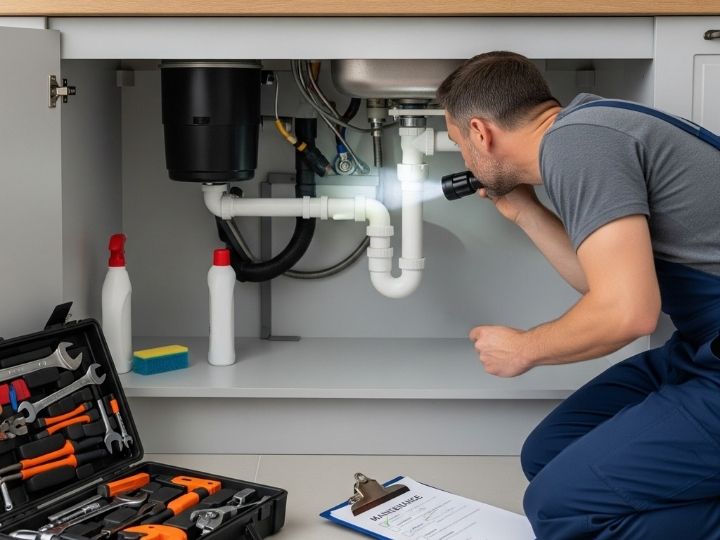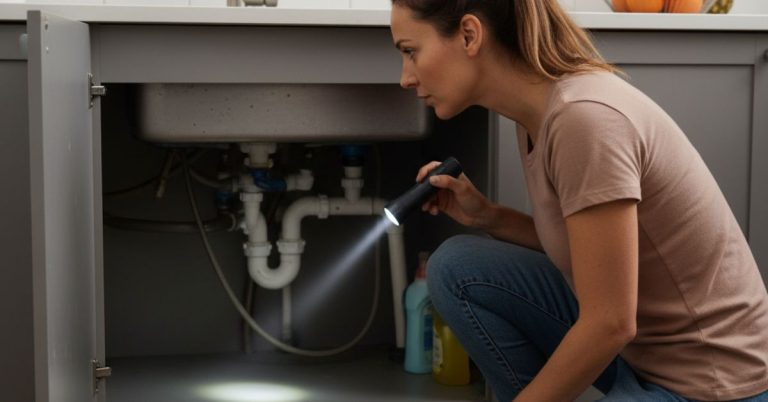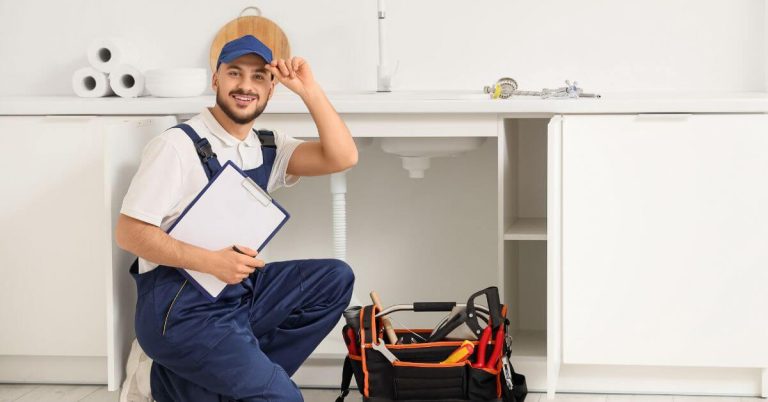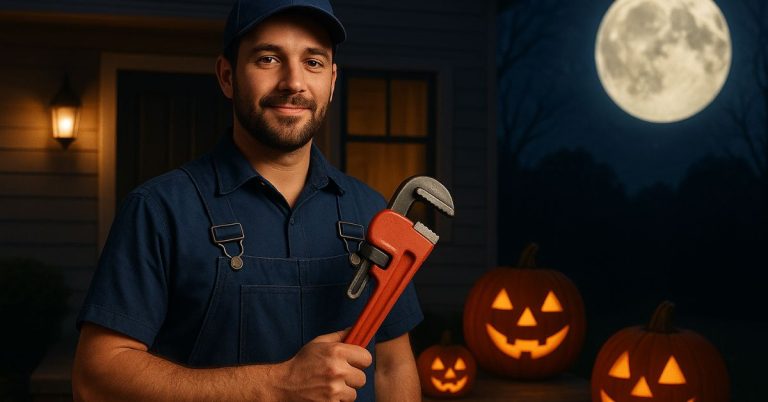Preventive plumbing maintenance typically costs less than emergency repairs, as it helps detect issues early, reduces damage, and avoids expensive fixes—saving homeowners significant money in the long run.
Key Takeaways:
- Maintenance prevents major plumbing issues
- Repairs are often urgent and costly
- Early detection saves time and money
- Maintenance extends system lifespan
Plumbing systems are foundational to the comfort and functionality of every property. Yet many homeowners and businesses delay routine upkeep until problems arise. This approach leads to costly repairs, property damage, and avoidable inconveniences. By comparing preventive plumbing maintenance and emergency plumbing repairs, we uncover which truly saves money, time, and stress in the long term—and how plumbing maintenance vs repair costs can significantly impact your budget and peace of mind.
Table of Contents
The True Cost of Reactive Plumbing Repairs
When plumbing systems fail, the results are rarely minor. Emergency repairs often involve not just fixing the problem at hand but also addressing secondary damage.
Common Plumbing Repair Costs
- Burst Pipes: $500 – $2,000+ (excluding water damage restoration)
- Sewer Line Repairs: $1,000 – $5,000
- Water Heater Replacement: $800 – $3,000
- Slab Leak Repairs: $2,000 – $6,000
- Emergency Service Fees: $100 – $300 per hour
In most cases, these costs escalate due to delayed detection. Leaks that go unnoticed for months can rot drywall, warp flooring, promote mold growth, and compromise structural integrity. What began as a simple $200 pipe fix could balloon into a $10,000+ home restoration project.
Additional Hidden Costs
- Increased water bills from undetected leaks.
- Temporary relocation costs if flooding renders areas uninhabitable.
- Loss of property value due to documented water damage.
What Is Preventive Plumbing Maintenance?

Preventive plumbing maintenance is a scheduled set of inspections and minor services aimed at detecting and resolving plumbing issues before they become serious. This proactive approach includes:
- Inspecting pipes for corrosion or leaks
- Testing water pressure
- Cleaning drains and removing buildup
- Flushing water heaters
- Checking for toilet leaks and worn seals
- Evaluating appliance water connections
Average Cost of Preventive Plumbing Maintenance
Routine inspections and maintenance are surprisingly affordable, especially when compared to emergency plumbing services.
- Annual Plumbing Inspection: $150 – $300
- Water Heater Flushing: $100 – $200
- Drain Cleaning: $100 – $300 per visit
- Toilet Seal Replacement: $75 – $150
Most plumbing companies offer annual maintenance packages ranging from $250 to $500, which include comprehensive inspections and minor fixes.
Preventive Maintenance: A Cost-Benefit Breakdown
Let’s evaluate a cost comparison between a homeowner who invests in preventive maintenance vs. one who waits for issues to arise.
Category | Preventive Maintenance | Emergency Repairs |
Annual Average Spend | $300 – $500 | $1,000 – $5,000+ |
Risk of Water Damage | Very Low | High |
Service Response Time | Scheduled | Variable/Delayed |
Utility Cost Impact | Optimized | Wasted Resources |
Long-Term Equipment Life | Extended | Reduced Lifespan |
In the long run, proactive care leads to lower expenses, fewer disruptions, and better water conservation.
Get your water heater repaired or replaced the same day
Top Reasons Preventive Plumbing Maintenance Costs Less
1. Early Detection Saves Thousands
Minor leaks, pipe corrosion, and valve wear can be corrected inexpensively. Left unchecked, they can burst, flood, or create expensive mold remediation scenarios.
2. Appliance Longevity
Regular flushing of water heaters prevents sediment buildup, improving efficiency and extending equipment life. A $200 flush may add 5–7 years to your heater, delaying a costly $1,500 replacement.
3. Energy & Water Efficiency
Leaky fixtures waste gallons of water daily. Maintenance ensures toilets, faucets, and water lines are sealed and efficient—cutting utility bills and reducing environmental impact through the use of water-efficient fixtures.
4. Avoiding After-Hours Fees
Emergency plumbers often charge double or triple standard rates for weekends, holidays, and night calls. Scheduled maintenance occurs during regular business hours—keeping costs predictable.
5. Peace of Mind
Property owners can rest easy knowing their plumbing system is monitored and maintained. This peace of mind is invaluable during extreme weather or high-usage seasons.
When Plumbing Repairs Are Unavoidable
Not all repairs are preventable. External factors—such as earthquakes, root invasions, or old infrastructure—may lead to issues beyond a maintenance plan’s control. However, even in these cases, a maintained system is more resilient and easier to repair.
For example:
- Tree roots may damage a sewer line, but if caught early during a camera inspection, hydro-jetting may prevent a $5,000 excavation.
- Freezing pipes can burst in winter. Insulated and monitored systems greatly reduce this risk.
Best Practices to Maximize Preventive Maintenance

Hire Licensed Plumbing Professionals
Preventive maintenance begins with hiring licensed, insured, and skilled plumbers. These professionals are equipped to detect underlying issues and offer expert solutions, including hydro jetting services for clogged drains. Their knowledge ensures your plumbing system operates efficiently and safely year-round.
Schedule Seasonal Checks
Scheduling seasonal plumbing checks is key to preventing weather-related damage. A professional can identify early signs of wear or corrosion. Regular sewer inspection during these visits helps prevent blockages, backups, and unexpected plumbing emergencies—especially before winter or rainy months hit.
Monitor Water Bills
Unusual increases in water bills may signal hidden leaks or inefficiencies. As part of routine preventive maintenance, tracking your usage can help catch small problems before they escalate into costly repairs, water damage, or mold growth—saving money and conserving water resources.
Install Leak Detection Devices
Smart leak detectors are essential tools in any preventive maintenance plan. They alert homeowners to even the slightest moisture, enabling swift action. These devices can prevent structural damage and mold, providing peace of mind and helping avoid major plumbing disasters down the line.
Know the Signs of Trouble
Don’t wait for visible water damage. Watch for:
- Gurgling drains
- Musty odors
- Discolored water
- Low water pressure
- Noisy pipes
Commercial Plumbing: The Stakes Are Even Higher
In commercial properties, the cost of plumbing failure can be devastating. Shuttered businesses, customer inconvenience, and reputation loss all amplify the importance of regular upkeep.
Commercial preventive maintenance plans often include:
- Grease trap cleaning
- Backflow testing
- Fixture calibration
- Restroom fixture inspections
For restaurants, medical facilities, and hospitality venues, a preventive program is not just advisable—it’s essential.
Find the Best Plumbing Maintenance Service Near You
Looking for a plumbing maintenance service near me that’s reliable, affordable, and thorough? Whether you’re a homeowner or manage a commercial property, choosing the right provider can make all the difference in preventing costly repairs. When evaluating options, look for companies that offer:
- Licensed and insured professionals
- Transparent pricing and maintenance packages
- Emergency support availability
- Positive reviews and satisfied customer feedback
For expert inspections and peace of mind year-round, call 5 Star Best Plumbing—the trusted name in dependable, high-quality plumbing care and maintenance.
Conclusion: Prevention Is the Smarter Investment
Investing in scheduled plumbing services isn’t just a smart move—it’s a financially sound one. By staying proactive, you reduce the risk of major water damage, avoid unexpected repair bills, and extend the life of your plumbing system. The peace of mind that comes with knowing your pipes, appliances, and drains are regularly inspected is priceless, especially during extreme weather or high-demand periods.
Compared to the skyrocketing costs of emergency fixes, scheduled plumbing services offer predictability, efficiency, and long-term savings. Don’t wait for leaks or breakdowns—prevent them with routine care from trusted professionals.
For expert help and customized maintenance plans, contact us today.
FAQs
How often should I schedule preventive plumbing maintenance?
You should schedule preventive plumbing maintenance at least once a year. Seasonal checks before winter or the rainy season are also highly recommended to prevent weather-related issues.
Is preventive plumbing maintenance really worth the cost?
Yes, preventive plumbing maintenance typically costs far less than emergency repairs. It helps avoid major damages, lowers utility bills, and extends the life of plumbing systems.
What are the most common signs of hidden plumbing problems?
Look out for gurgling drains, musty odors, low water pressure, discolored water, or sudden spikes in your water bill. These signs often indicate leaks or blockages needing attention.
Can I do preventive plumbing maintenance myself?
You can handle simple tasks like checking for leaks or cleaning drains, but a licensed plumber is essential for thorough inspections and system testing. Professional tools and expertise ensure nothing is overlooked.
What should be included in a plumbing maintenance plan?
A good plan should include pipe inspections, water pressure tests, drain cleaning, leak detection, and appliance connection checks. Some packages may also cover water heater flushing and toilet seal replacements.








